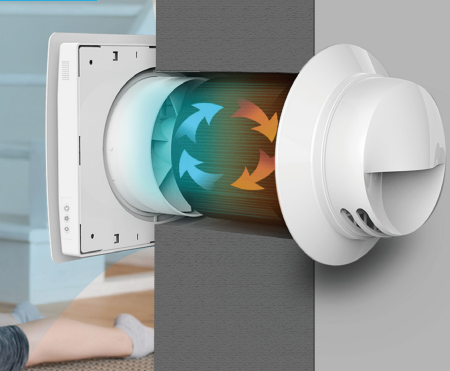Checking out the Benefits of Heat Recovery Ventilation for Energy Effectiveness in Homes
Heat Recovery Ventilation (HRV) systems provide house owners a sensible approach to improving power efficiency. By recovering warm from outward bound air, these systems can significantly lower heating & cooling prices. Furthermore, they give a consistent supply of fresh air, boosting indoor air quality and convenience levels. As property owners consider lasting options, comprehending the nuances of HRV systems ends up being increasingly important. What variables should one evaluate before making such a financial investment?
Recognizing Heat Recovery Ventilation Equipments

Just How HRV Boosts Indoor Air High Quality

Energy Financial Savings: The Financial Benefits of HRV
Taking full advantage of energy performance, heat recovery ventilation (HRV) systems offer substantial financial benefits for property owners. By recuperating and recycling warmth from exhaust air, HRVs markedly minimize heating & cooling expenses. This modern technology can cause power financial savings of as much as 30%, depending upon climate and use patterns. Property owners frequently discover minimized energy bills soon after setup, making HRVs an economically wise investment gradually. Furthermore, several regions supply incentives or rebates for energy-efficient upgrades, even more improving the financial charm. As energy prices proceed to climb, the cost-effectiveness of HRVs comes to be increasingly clear. Generally, the unification of HRV systems not just advertises power effectiveness however also adds to long-lasting economic cost savings for households.
The Environmental Impact of Heat Recovery Ventilation
A considerable environmental benefit of heat recovery ventilation (HRV) systems exists in their capability to decrease general energy intake. By recovering warm from exhaust air and transferring it to inbound fresh air, HRV systems minimize the demand for energy-intensive heating and cooling down techniques. This decrease in power need contributes to decrease greenhouse gas exhausts, as less nonrenewable fuel source is required to maintain comfy interior temperature levels. In addition, HRV systems boost indoor air high quality by successfully trading stagnant air with fresh outdoor air, decreasing reliance on mechanical cooling systems that can hurt the setting. In general, the execution of HRV systems sustains lasting living my explanation practices and straightens with worldwide efforts to combat environment modification by promoting power performance in household setups.
Choosing the Right HRV System for Your Home
How can homeowners ensure they pick the best heat recovery ventilation (HRV) system for their needs? First, they must assess their home's size and design, as these factors influence airflow demands. Next off, examining the system's effectiveness ratings is essential, as higher rankings show much better efficiency and energy financial savings. Homeowners ought to additionally think about setup and maintenance expenses, comparing various brands and models for value. Furthermore, it's vital to review noise degrees, as some systems run even more quietly than others. Consulting with HVAC specialists can provide customized recommendations based upon specific home conditions. Checking out individual evaluations and guarantees can help in making an educated decision, guaranteeing that the chosen HRV system properly enhances interior air top quality and energy efficiency.
Frequently Asked Inquiries

Exactly how Usually Should I Tidy or Keep My HRV System?
The regularity of cleaning or maintaining a warmth recovery air flow (HRV) system commonly relies on use and environmental aspects. Generally, it is recommended to execute maintenance every six months to ensure peak performance and air high quality.

Can HRV Systems Help Lower Humidity Levels Inside?
HRV systems can efficiently decrease indoor moisture degrees by exchanging stale, humid air with fresh, drier air from outside. HRV Heat Recovery Ventilation. This process aids maintain a well balanced interior setting, enhancing comfort and protecting against moisture-related issues
What Is the Life expectancy of a Common HRV System?
The lifespan of a typical heat recovery ventilation (HRV) system varies, normally lasting in between 10 to 15 years. you could check here Regular maintenance can prolong its effectiveness and functional life, ensuring peak performance throughout its usage duration.
Exist Any Sound Worries With HRV Solutions?
Noise interest in HRV systems can emerge, specifically from fan procedure. However, many modern devices are designed to decrease sound degrees, guaranteeing they run quietly while keeping efficiency, which attends to potential disturbances in living settings.
Can I Mount an HRV System Myself, or Do I Required a Professional?
The specific contemplated whether to set up the heat recovery ventilation (HRV) system personally or employ a specialist. Generally, while DIY setup is feasible, competence assurances appropriate performance and compliance with neighborhood building regulations, improving system effectiveness.